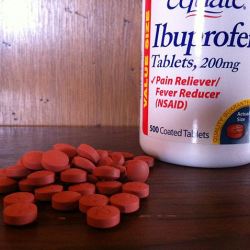Accelerated approval is intended to get needed drugs to patients, but there are sometimes distortions and complications in the process that should be addressed.

During my years as an FDA official, I learned that there is a fundamental fact of life that underlies all drug testing and regulatory review: The data are seldom as complete and unequivocal as you might like. But getting drugs to patients can be a matter of life or death so you need to make hard decisions. Fortunately, the regulations offer some flexibility, so that the criteria for demonstrating efficacy are more lenient in certain critical situations. One of those pathways is called “accelerated approval.”
Performing the clinical trials to prove that a new drug is effective – that is, provides actual “clinical benefit” – can take many years. But because preliminary, or presumptive, evidence may be available earlier in the process, in 1992 FDA instituted the “accelerated approval” regulations, which allow drugs for serious conditions that fill an “unmet medical need” to be approved based on a so-called “surrogate endpoint,” an indirect indicator of improvement in the illness or disease. It could be a laboratory measurement, radiographic image, physical sign, or other measure that is thought to predict clinical benefit but is not itself definitive. Using such an endpoint can considerably shorten the time to FDA approval.
The drug’s sponsor (usually a drug company) is then required to conduct studies to confirm the anticipated clinical benefit. If the confirmatory trial shows that the drug provides an actual clinical benefit, then the FDA grants full, or traditional, approval for the drug. If the confirmatory trial fails to show that the drug provides clinical benefit, in theory FDA has regulatory procedures in place that could lead to removing the drug from the market.
That is the idealized scenario, however, and there are several possible distortions or complications.
First, the confirmatory studies to demonstrate a clinical benefit can take many years – a decade or more -- while the accelerated approval is in effect and the drug is being sold.
Second, when the confirmatory studies fail, the companies sometimes resist having the accelerated approval withdrawn.
An example of both these points is a drug called Makena, to prevent preterm births, which affects one in 10 babies in the U.S. The drug was granted accelerated approval in 2011 based on a reduction in the rate of preterm births, but the follow-up studies failed to verify actual clinical benefit of the drug – namely, the health of the babies. In fact, they showed the opposite – that the drug’s adverse effects include an increased risk of cancer. The FDA finally withdrew the accelerated approval on April 6th of this year.
In the Makena example, it might seem that 12 years from the granting of the accelerated approval to its withdrawal by the FDA due to failed confirmatory trials is an awfully long time, but it that could be due to an inherent paradox in the accelerated approval process. Recall that it applies to drugs that are for an “unmet medical need, which often means for patients with a dire prognosis. (Many accelerated approvals are for drugs for cancer or rare genetic diseases.) Thus, there are often no good alternative treatments, which presents a problem for both the drug’s sponsor and regulators: How do you recruit patients into a randomized, controlled clinical trial in which an individual patient might receive a placebo or a marginally effective drug instead of the one that received accelerated approval and is readily available? Although there are trial designs that don’t have a placebo arm, it can be very difficult to perform a clinical trial of sufficient size to get statistically meaningful results.
Congress tried to improve the accelerated approval process in the 4,000-plus-page omnibus appropriations bill that was passed and signed into law last December. It included the Food and Drug Omnibus Reform Act of 2022 (“FDORA”), which made several changes. It enables FDA to require a post-approval study to be underway prior to granting accelerated approval and expands the FDA’s expedited withdrawal procedures to allow the agency to more quickly withdraw approval if a sponsor fails to conduct any required post-approval study of the product with due diligence. Also, once a company does receive the accelerated approval, it must provide status reports on the confirmatory trials to the FDA every six months, and the FDA is required to publish the reports on its website. The bill also created an accelerated approval oversight council, with members from various FDA components.
Those tweaks represent incremental progress, but more could be done. In a recent article in JAMA, law professors Holly Fernandez Lynch and Rachel E. Sachs argued persuasively that following accelerated approvals, the FDA needs “adequate independent authority to rapidly remove ineffective products” and that “the agency’s regulatory flexibility to withdraw should match its flexibility to approve.” They suggested that a combination of voluntary postmarketing commitments, specified conditions for withdrawal of the approval, and explicit waiver of the right to a post-withdrawal hearing would bring us closer to an effective model of accelerated approval.
I agree.
